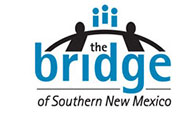Let Business Lead
Las Cruces Sun-News – Learn & Earn Column, July 1, 2018
Workforce is the place where education and ability meet opportunity and employer demand.
Across the country, states and communities just like ours are wrestling with the workforce conundrum:
We have people. We have jobs. But the people we have are not equipped with the knowledge and skills needed in those jobs. So now what?
Doña Ana County is actually at the forefront of this national dilemma, because we have already tested and proven the answer to this challenge: let business lead.
The Bridge of Southern New Mexico emerged as a business-led, education-focused response to our graduation rate crisis in 2007. By literally building a “bridge” across the chasm between education, economic development, government and business, we connected the dots, found new and better ways of supporting students, and worked together to change the system. We skyrocketed from 49% graduation rates across the county a decade ago to the now state-leading 80% graduation rates our youth and families now enjoy countywide.
So, solving the workforce crisis we face is the same: let business lead.
Literally every week, a new study or research paper confirms the power of business leadership in solving our workforce crisis, and that work underway in Doña Ana County is ABSOLUTELY the right thing to do.
One of the areas where we are poised and ready to make a positive impact in our community is in support of youth employment. Youth employment literally changes the trajectory for young people for life.
J.P. Morgan Chase’s New Skills at Work initiative found summer employment increases high school graduation rates, but also “paves the way to a successful progression into adulthood,” through skills development, increased earnings, improved school attendance and educational outcomes, especially for those at risk of dropping out, reduced involvement in the juvenile and criminal justice system, a pipeline of workers and reduced poverty.
They demonstrated the connection between summer jobs and long-term employment outcomes, including:
- 86% of teens who work are more likely to be employed in the next year
- Work-based learning activity can increase a young person’s salary by as much as 11% for up to eight years after high school
The importance of youth employment is even greater when we consider “Opportunity Youth,” the 16 to 24-year-olds who are neither in school, nor working.
One of the leading sources of information on this subject is Opportunity Nation, an organization working to illustrate how the disconnection between education and career focus has yielded devastating effect on our economy.
According to their reporting, in our country, there are 5.5 million Opportunity Youth. The cost to taxpayers is $93 billion each year with a total of $1.6 trillion in lost lifetime revenue and increased social services.
Additionally, jobless rates for youth 16-24 are twice jobless rates for adults. And all of this comes with hidden costs:
- Loss of $25 billion per year in uncollected taxes and increased safety net expenditures
- $4,100 per unemployed person per year in forgone federal and state tax revenue and benefits received
Opportunity Nation produces a state and county-level Opportunity Index, which measures opportunity for Opportunity Youth and considers things like the economy, education, health and community.
Sadly, this is one more of those scales where New Mexico’s ranking is not at all where we would like it to be. The Opportunity Index shows that 17.4 percent (45,931) of New Mexico’s youth are Opportunity Youth. Doña Ana County stands at 13 percent, or 4,850 youths.
But what if we set about to change that? What if we, as a community, were very intentional about creating an environment where youth employment could thrive? What would happen if our employers took the lead in engaging our young people in work environments through job shadowing, internships and apprenticeships, exposing them to the skills and knowledge they’d need to be successful?
For one, we’d close the soft skills gap…for good. We’d also close the middle skills gap, by helping our young people have a clear understanding of just how much and what kind of education and training they need for the careers they want, rather than spending thousands of dollars in federal, state, and personal dollars to get degrees that aren’t relevant and will leave them deeply in debt.
We’d also be well on our way to achieving 90 percent graduation rates as a community, and the economic benefits would be HUGE! An additional 10 percent increase in high school graduation rates would increase their income collective income more than $3 million annually, in turn generating increases in disposable income, federal and state taxes paid, and the reduced need for social services.
In a nutshell, EVERYONE wins.
Let’s take the next step in needle-moving change. Let’s create the win-win relationships between our young people and our employers that will change the future for us all.

